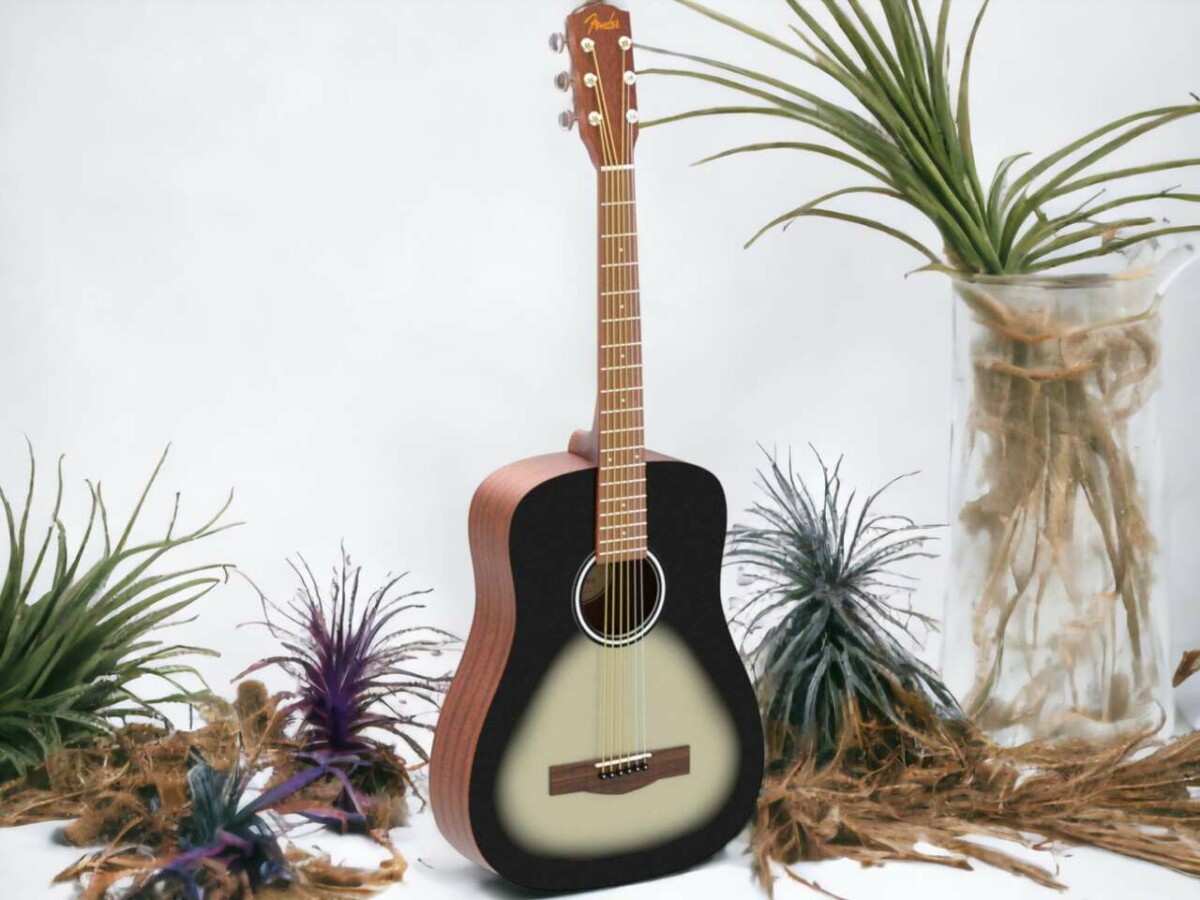So, you’re a guitar guru, creating epic soundscapes with every strum. But ever wondered what’s going on under your foot when you slam that pedal?
Let’s unravel that mystery. We’re about to deep dive into the world of guitar pedals, looking at how they transform your basic strums into mind-blowing echoes, badass distortions, and blistering overdrives.
Ready to level up your knowledge? Let’s get this electrifying exploration of your sound’s DNA started.
Working of a Guitar Pedal
A guitar pedal alters the sound your guitar produces before it reaches the amplifier. Different pedals have different effects like reverb, delay, or distortion, achieved by modifying the sound signal uniquely.
Understanding how your guitar pedal works boils down to grasping the basics of signal generation and amplification. Every time you strum your guitar, vibrations are sent straight to the pickups – the heart of your electric guitar. These are basically magnets that create an electric signal when your guitar strings vibrate, altering their magnetic field.
And guess what? The material of these pickups can dramatically change your sound. You’ve got options like steel, alnico, and ceramic, each offering a unique sound. Steel, with its high inductance, gives you a rich, mellow tone. Alnico, however, delivers a more dynamic, detailed sound. And ceramic? It’s your go-to for a bright, crisp tone.
But here’s the kicker, the signal created is pretty weak and needs a bit of a kick to really make an impact. This is where impedance matching steps in. Think of impedance as electrical friction – it can seriously mess with your signal if not managed properly. Your guitar is a high impedance device, and your amp is a low impedance one. Connect them directly and your signal could end up weaker and less clear. That’s why a preamp is used – to match the impedance and boost the signal without losing quality.
Knowing all this, next time you step on that pedal, you’ll feel more in tune with your gear. So don’t stop experimenting and let your love for music be your guide.
The Importance of Pickups in Electric Guitars
You know that electrifying, adrenaline-pumping sound that makes your fingers itch to strum a tune? That’s all thanks to the magic of pickups. Essentially, they’re the heartbeat of your electric guitar, taking those string vibrations and turning them into mesmerizing musical notes.
It’s pretty rad how they come in all shapes and sizes, each with their own unique sound. It’s like they’re the secret sauce behind every epic guitar riff you’ve ever heard. Seriously, without them, your guitar would be as silent as a library on a Sunday morning.
Pickups’ Role in Sound
In the electric guitar universe, pickups are basically the superheroes. They take the vibes from your strings and turn them into electrical signals. This sets everything up for the amp and other mods to work their magic and create the final sound.
The way it works is pretty rad. The pickups have these magnets, right? They’re chilling right under your strings. When you hit the strings, it messes with the magnet’s field, which generates an electrical signal. It’s like your guitar is talking in an electronic language, and that’s how it brings your killer riffs to life.
Now, the kind of pickups you have, where they’re located, and how they’re set up can seriously change the sound of your guitar. It’s like giving your guitar a personality makeover. It’s crazy how many different tones you can get just by tweaking your pickups.
Types of Guitar Pickups
Let’s take a deep dive into the world of guitar pickups, and get a grip on why they’re the heartbeat of your electric guitar’s sound. It’s all about the pickups you outfit your axe with, that gives it its unique voice, so getting a handle on the materials used in pickups and the various configurations is pretty key.
First off, we’ve got our Single-Coil Pickups. These babies belt out a sound that’s bright and crystal clear, making them a go-to for those of you into blues, country, or rock. They’re crafted from a single coil of wire that’s lovingly wrapped around a magnet.
Next up, we’ve Humbucker Pickups. Think of these as two single-coils all rolled into one neat package. These guys are all about dialing down the noise and hum, while serving up a sound that’s richer and fuller than the single-coils.
Then there’s the P-90 Pickups, which are like the perfect blend of single-coil and humbucker pickups. They dish out a tone that’s warmer and more well-rounded.
Just remember, the right pickups are like the secret sauce to taking your guitar shredding to the next level!
An In-depth Look at Guitar Pedals: Analog Vs. Digital
So, you’ve got an itch to dive deep into the world of analog versus digital guitar pedals, huh? Well, brace yourself, because we’re about to dissect how these two beasts handle your guitar’s signal in their own unique ways. And spoiler alert: understanding these differences can seriously level up your tone and, in turn, elevate your performance.
We’re not just talking about a subtle shift here. Nah, this is the kind of knowledge that can have a massive impact on your sound. So, buckle up, because we’re about to embark on a sonic journey that’ll change the way you think about guitar pedals. Trust me, it’s gonna be epic.
Analog Vs. Digital Pedals
So, you’re about to delve into the world of guitar pedals, huh? You’ve got two heavy hitters to choose from: analog and digital. Each has its own way of processing sound, and they each bring something different to the table. So let’s break it down:
First up, analog pedals. These bad boys are revered for their warm, earthy tones that just ooze authenticity. The downside? They’re not always the best when it comes to complex sound effects. They’ve their limits, you know?
Now, on the flip side, you’ve got digital pedals. These guys are a playground of sound possibilities, seriously, they can do a lot. But of course, there’s a catch. Some music purists argue that the whole digital conversion thing kind of strips the sound of its soul. It’s all a matter of perspective, really.
If you’re into comparing sound quality, here’s the deal: analog pedals are top-notch when it comes to delivering a raw, unfiltered sound. Digital pedals, though, they’re the kings of precision. They can mimic a wide range of effects with a level of detail that’s pretty impressive.
At the end of the day, whether you go analog or digital should really depend on the kind of sound you’re after and the musical journey you’re on. So, take your pick, rockstar!
Signal Processing Differences
In the world of guitar pedals, there’s a pretty major difference between analog and digital ones – it’s all about how they process the signal.
Analog pedals work their magic by directly tweaking the signal using electrical components, resulting in a warm, rich, and earthy tone.
On the flip side, digital pedals take the signal, turn it into digital data, do their thing, and then convert it back to analog.
When it comes to the overall tone quality, these techniques can make a world of difference.
Analog pedals usually bring a more ‘real’ or ‘natural’ sound to the table, while digital pedals are all about precision and adaptability.
You’ll see that digital ones can replicate a wide range of analog effects, but the purists out there might argue that they just don’t quite nail the ‘soul’ or essence of a true analog signal.
Effect Quality Comparison
Alright, let’s take a closer look at the whole analog versus digital guitar pedals debate and see what makes each of them unique.
First up, Durability of the Effects: When it comes to longevity, analog pedals take the cake. They’re designed to be simple and sturdy, with fewer parts that can break. Digital pedals, though they might be a bit more fragile because of their complexity, make up for it with the sheer variety of effects and presets they bring to the table.
Moving onto Sound Quality: A lot of musicians have a soft spot for the rich, authentic tones that only analog pedals can deliver. But don’t count digital pedals out just yet – they’re known for their sharp, spot-on effects and their ability to mimic various analog sounds.
Next, let’s talk about the Cost Factor: Analog pedals are usually easier on the pocket, but don’t be fooled, their high-end models can still leave a dent in your wallet. On the flip side, digital pedals can be a bit heavy on the pocket, especially the ones loaded with fancy features.
At the end of the day, the decision between analog and digital is a deeply personal one. It all boils down to what kind of sound you’re after, your playing style, and of course, how much you’re willing to shell out.
The Intricacies of Digital and Analog Processing
As you’re rocking out on your electric guitar, it’s pretty important to know that the tunes you’re producing are tweaked by either analog or digital processing in your pedal. Basically, the choice between digital and analog makes a huge difference in how your guitar vibe is crafted.
Let’s take a deep dive into this complex world of signal processing and highlight the good and bad of each method.
Digital processing is all about taking your guitar’s analog signal, turning it into digital info, messing with it through some high-tech signal processing algorithms, and then shooting it back out as an analog signal. It’s super precise and adaptable; you can mimic those iconic amp sounds or let loose with some out-of-this-world effects. But, of course, some hardcore enthusiasts reckon it’s missing that analog warmth and natural vibe.
On the other hand, analog processing is about tweaking the signal straight up with electronic components, like resistors and capacitors. It’s all about that raw, unfiltered, and warm sound. Many guitarists are all over analog for its genuine and unpredictable nature. But don’t forget, it’s not as adaptable as digital, and the quality can swing wildly from one pedal to the next.
At the end of the day, the decision between digital and analog is all about what you dig and the specific sound you’re after. Whether you’re into the precision of digital algorithms or the unrefined edge of analog circuits, getting to grips with these details will help you max out your pedalboard.
The Key Components of Guitar Pedal Circuits
To really nail the whole guitar pedal game, you gotta get your head around the nuts and bolts of pedal circuits. The circuitry of your guitar pedal is basically its beating heart and soul, and the real magic starts when you start messing around with these circuits to get your sound just right.
- Amps and Buffers: So, these bad boys are all about amplifying your guitar’s signal to a level where it can be tweaked and played with. Buffers, however, are your signal’s bodyguards. They keep the strength and quality of your signal intact as it makes its way through the pedal.
- Filters and Clippers: These are your sound sculptors. Filters tweak the frequency of the signal, letting you mold your sound. Clippers, on the other hand, are all about generating distortion. They limit signal peaks, giving you that gritty, crunchy sound.
- Oscillators and Potentiometers: Oscillators are what give you those wavering effects like tremolo and vibrato, adding that rhythmic or shimmering quality to your sound. Potentiometers, or ‘pots’ if you want to be cool about it, let you control different aspects of your pedal, like the intensity of your distortion or the speed of a tremolo effect.
Behind all these gizmos are a ton of signal modification techniques. These are the secret sauce that changes your guitar’s raw signal into the full-bodied, intricate sounds that blast out from your amp. Getting to grips with these circuits and techniques is how you’ll unleash the full power of your pedals, and by extension, your music.
The Assembly of a Guitar Pedal: From Power Supply to Final Output
Alright, buckle up! We’re about to dive headfirst into the intricate process of assembling a guitar pedal. From powering it up to that final, sweet output, this is a journey into the nitty-gritty of crafting those killer guitar tones you love.
Let’s kick things off with the power supply, the heart of the operation. The pedal needs this power source to be pure, steady, and perfectly suited to its circuits. Any unwanted noise or fluctuation can seriously mess up your sound. The really well-made pedals will have filters to block out any electrical noise and regulators to provide the exact juice needed.
Moving on, we’ve got the signal routing and switching mechanisms. These dudes are like the behind-the-scenes rockstars of your pedal’s operation. They guide your guitar signal on its epic journey through the pedal, making sure it hits the right spots at the right times. Those switches are your command centre, letting you turn on or turn off the pedal’s effect with just a stomp of your foot.
Next up is the main showdown: the effect circuit itself. This is where the magic happens. Your signal gets molded, messed with, and morphed into the sound you’re after. This could mean cranking it up with amplification, dirtying it up with distortion, getting weird with modulation, or a whole bunch of other processes.
And finally, we wrap things up at the output stage. Here, your transformed signal is all set to be kicked out to your amp or the next pedal in your chain. This stage usually has a buffer to make sure your signal stays true to its form.






